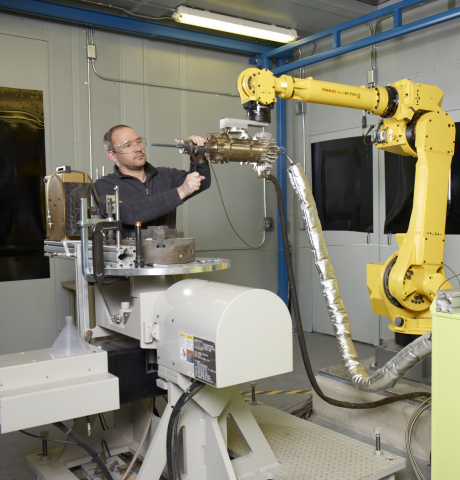
“In addition to being able to build new parts without welding or machining, what’s particularly exciting about cold spray as an innovative, 3D process is that it affords us the opportunity to restore parts using materials that blend in and mirror the properties of the original part itself,” said Anteneh Kebbede, manager of the coating and surface technologies lab at the GE Research Centre. “This extends the lifespan of parts by years, or possibly by decades, ultimately providing improved customer value.”
Spray technologies are particularly suitable for the production of large structures, which cause problems in powder-bed additive manufacturing processes due to equipment size limitations. The cold spray technique has the potential to scale up to build larger parts, with the only limitation being the size of the area over which metal powders can be applied.
Cold spray, also known as 3D painting, could be used to repair processes for industrial and aircraft components such as rotors, blades, shafts, propellers, and gear boxes. Since cold spray does not require heat, like common repair processes such as welding, it allows a repaired part to be restored close to its original condition. In GE’s oil and gas business, GE researchers are exploring cold spray as an alternate way to repair or coat parts involved in oil and gas drilling and turbo machinery.






